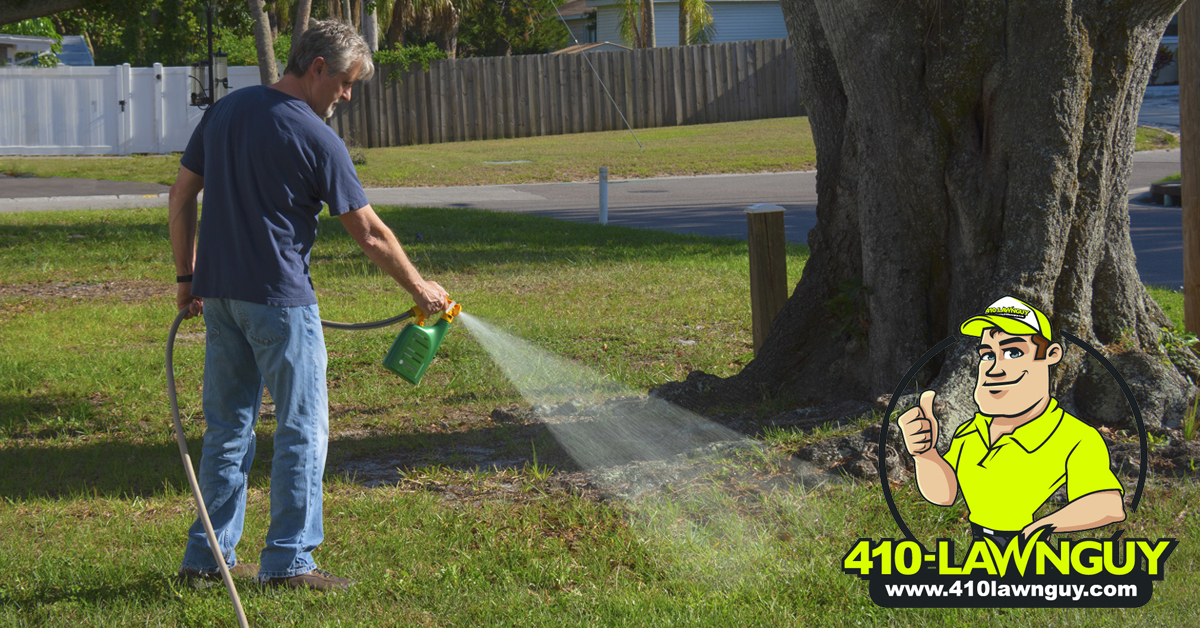 No matter how much effort you put into maintaining your lawn, you’re bound to get weeds at some point. In Maryland, there are several weeds to contend with, and most of them can multiply quickly.
No matter how much effort you put into maintaining your lawn, you’re bound to get weeds at some point. In Maryland, there are several weeds to contend with, and most of them can multiply quickly.
The problem with most weeds in Maryland is the seeds travel with the wind. So, even if you get rid of the offenders taking up residence in your yard, they can quickly germinate and take root in your lawn. Once a weed seed lands in your yard, it can stay dormant for years. When conditions are right, they germinate and spread roots, making it more difficult to get rid of them.
In Maryland, these conditions include:
- Improper Lawn Mowing
- Not Watering Your Lawn Correctly (Under-Watering Or Over-Watering)
- Not Using The Proper Fertilizing Methods
- Warm Temperatures
- Poor Soil
- Bare Or Thinning Spots In Your Lawn
Common Weeds in Maryland
Most weeds in Maryland fall into two categories; broadleaf and grass weeds. There can be a number of both lying dormant in your lawn, just waiting to make their appearance and take over.
The University of Maryland has an extensive weed identification and management guide to help you identify and eradicate these common Maryland weeds.
Maryland Broadleaf Weeds
- Black medic – shallow taproot system that prefers dry, nutrient-deficient soil
- Broadleaf and curly dock – seeds can lay dominant indefinitely, prefers damp rich soil but can also grow in dry, nutrient-poor soil
- Broadleaf plantain – grows in dry, compacted soil and improperly fertilized lawns; seeds attach to animals and humans
- Chickweed – prefer thin lawns and wet climates, creates dense patches, spreads in the spring, germinates in the fall
- Common chickweed
- Field chickweed
- Mouse-ear chickweed
- Sticky chickweed
- Clover – prefers poorly maintained gardens, grows by seed dispersed through the air or above-ground runners
- Dandelion – prefers grass mown too short, seeds disperse through the air once it reaches maturity, can grow year-round if the climate is right
- Deadnettle – grows in too-short mown grass, root system anchors it underground, seeds spread in spring, germinate in fall or early spring the following year
- Ground ivy – prefers shady and damp areas but can also thrive in direct sunlight, can grow from seeds or through runners above ground
- Hairy bittercress – prefers too-short grass and shady locations; seeds come from the top of the plant once it reaches full maturity
- Henbit – prefers grass mown too short with improper fertilization, same root system as deadnettle, grows in early spring and fall
- Indian mock strawberry – prefers moist, shaded lawns that are well mown, typically roots with runners to create new plants
- Knotweed – prefers heavily trafficked, compacted soil grows from midsummer to the end of fall
- Oxalis – prefer moist, fertilized soil grows from spring until early fall
- Shepherd’s purse – grows best in un-mowed areas of the yard, easily disperses seeds, grows from early spring to late summer
- Wild garlic and onion – grows in grass cut too short and improper fertilization, spreads underground
Maryland Grass Weeds
- Annual bluegrass – prefers moist, compact soil with high nitrogen levels, throws shoots from the base to spread, grows in winter
- Crabgrass – spreads by seed and stems rooting through the grass, pops up in thin or bare spots, and lawns mown too short grows from spring through late summer
- Dallisgrass – prefers moist lawns with poor drainage and high temperatures and spreads through airborne seeds
- Goosegrass – prefers too-short grass and compacted soil, spreads by seed
- Japanese stiltgrass – sticky seeds that attach to spread, can lay dormant underground for years, prefers too short grass and disturbed soil, shade, or sunlight
- Kyllinga – prefers moist lawns with the direct sun but can also grow in dry lawns with shade, spreading like a mat by growing leaves at stem nodes
- Nimblewill – spreads through seed and underground runners, prefers shade and poorly fertilized soil, though can grow in direct sunlight
- Orchardgrass – prefers dry soil, usually spreads from attaching to grass seed or straw mulch
- Quackgrass – prefers poorly maintained lawns, looks like wheat in the summer, and spreads from rhizomes
- Yellow nutsedge – spreads through seed, rhizomes, and underground runners prefers wet lawns with poor drainage
Maryland Weed Management
The best way to manage the weed problem in Maryland is to keep your lawn and landscaped areas maintained. Remove weeds manually, and only use herbicides as a last resort because they can affect your other plants.
Don’t want to do the maintenance yourself? Call the 410-LAWNGUY (410-529-6489) today or contact us online to get a free estimate!

